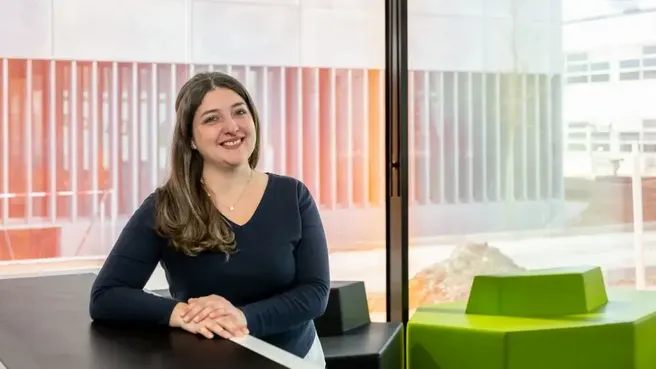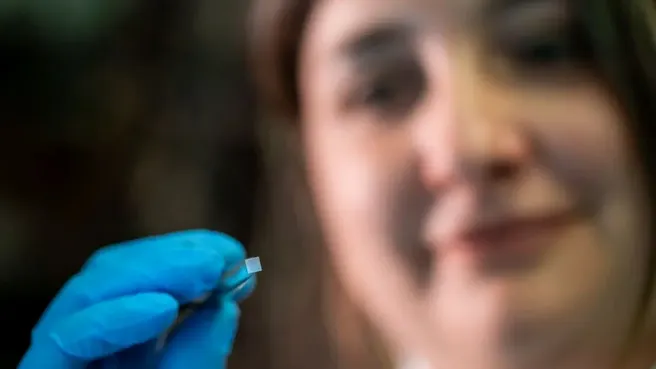Why are young, talented researchers attracted to TUM? Where do they come from, and what do they work on? Physicist Viviana Villafañe came to TUM from Argentina six years ago to work here as a postdoctoral researcher. She now heads a small research group that is investigating the basics of a quantum internet – with the help of diamonds and quantum computers.
Viviana Villafañe works at the Walter Schottky Institute at the chair of Prof. Kai Müller and Prof. Jonathan Finley. She recently became a TUM Junior Fellow there with her own team, which she supervises scientifically. There were several reasons why she came to Munich from her home country of Argentina in 2019: “I chose TUM because it offers me cutting-edge research in the field of quantum physics as well as an international collaborative environment.” Her team is well networked and cooperates with many different groups at the university and the Cluster of Excellence “Munich Center for Quantum Science and Technology” (MCQST).
Color centers in diamonds
Villafañe's research focuses on the behavior of atoms and electrons in diamonds. These normally consist of many carbon atoms (C atoms), which are arranged in a fixed lattice structure. Natural or laboratory-generated processes can lead to deviations in this fixed arrangement. For example, instead of carbon atoms, silicon atoms are present at certain positions in the lattice. If there is also a gap in their vicinity because a carbon atom is missing, so-called color centers are created.
These areas in diamonds have special quantum mechanical properties: If such a diamond is irradiated with a laser, the color center begins to emit light in the form of individual light particles (photons) – a very rare phenomenon. Additionally, if microwave radiation is applied instead of a laser, the color centers’ intrinsic angular momentum (spin) can be controlled by the interaction with the microwaves. This plays an important role in using this system in quantum computers to generate and transfer quantum information.
Basic research for the quantum internet
Viviana Villafañe uses these color centers to investigate how light, sound, and spin of electrons influence each other at the quantum level and affect vibrations in the crystal lattice. These interactions are interesting both for the transmission and for the encryption and storage of quantum information. The findings from her research could provide the basis for a future quantum internet – a new, extremely fast and very secure data network.
With her work, Villafañe also wants to encourage other researchers – especially women – to explore the quantum world: “I would like to inspire more young people to join us. It takes all kinds of minds to make these technologies work.”
Further information and links
- Profile of Viviana Villafañe at MCQST
- Website of the Cluster of Excellence MCQST
- TUM Junior Fellows
- Quantum research at TUM
- TUM science glossary: quantum technologies
Original article: https://www.tum.de/en/news-and-events/all-news/press-releases/details/diamonds-and-quanta


